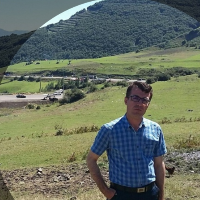Soil Erosion Dynamic on Storm-Basis due to Land Use Correction in the High Priority Sub-Watersheds of the Galazchai Watershed, West Azerbaijan, Iran
Assessing the effectiveness of Land management based on land capability in priority areas to preserve natural resources and prevent adverse effects of rainfall events is essential for comprehensive watershed management. At the same time, it prevents rapid and inappropriate changes in land use and leads to the promotion of ecosystem services. However, evaluation of the effect of management measures on changing soil erosion resulted from various storms with a focus on prioritized sub-watersheds is scant. Therefore, the present study was conducted to estimate and analyze the stormwise soil erosion dynamic under the influence of management measures based on land capability in the prioritized sub-watersheds of the Galazchai Watershed, Oshnavieh, Iran.
To achieve the objectives of the present study, firstly, according to the results of the Borda scoring algorithm, prioritized sub-watersheds with a relative area of about 34% were recognized. Then, the variability of soil erosion in 38 storms in recent years before and after the application of land capability in the mentioned sub-watersheds as well as the watershed was evaluated using the revised universal soil loss equation.
The results showed that the rate of soil erosion of the study storm events varied in the range of 0.012 to 0.028 t. ha-1. Storm-1. However, in terms of management measures based on ecological potential in prioritized sub-watersheds, the rate of soil erosion of all study events at the outlet of the watershed has decreased from seven to 14% and at the outlet of prioritized sub-watersheds in most storms studied varied from two to 34%. However, the land availability in late winter and early spring has increased the rate of soil erosion compared to the initial conditions in the Milan 1, Milan 2, and Gazan 1 sub-watersheds from two to six percent, which can be attributed to the low density of vegetation at the time of storms’ occurance. The results also showed that the highest rate of soil erosion reduction occurred in events with rainfall of five to eight mm and the effectiveness of management measures in the maximum storms was less than the moderate storm events.
The results of the present study showed that if the land-use pattern would be adopted at six percent of prioritized sub-watersheds, the soil erosion resulting from study storms would have been declined by 14 percent at the watershed main outlet. The findings of the current study can provide a suitable management approach for planners and policymakers to apply appropriate managerial scenarios in high-priority areas.
-
Spatial assessment and zoning of landslide risk in Zamkan watershed using support vector machine and logistic regression
Fariba Esfandyari Darabad, Ghobad Rostami, *, Mousa Abedini
Hydrogeomorphology, Autumn 2024 -
Changeability of saline soil surface due to soil cyanobacteria inoculation using image processing
Sudabeh Gharemahmudli, *, Vahideh Sadat Sadeghi
Water and Soil Conservation, -
A Biological Management Model for Controlling Soil Erosion in Rangelands of the Kojour Watershed, Mazandaran Province, Iran
*, Mahin Kalehoee, Majan Bahlakeh, Ali Noor, Arasteh Payfeshordeh, Masumeh Havassi, Nastaran Naderi Maranglou, Mehdi Kheirparsat
Journal of Rangeland, -
Land degradation intensity mapping using environmental factors and Sentinel-2 derived spectral indices in an arid region in south of Iran
Mohamamd Ebrahim Afifi, *
Anthropogenic Pollution Journal, Winter and Spring 2024 -
Effects of Different Methods for Calculation of Topographic Factor on Precision of Storm-Wise Soil Loss Estimation
Azadeh Katebi Kord, *, Vijay P. Singh
Journal of Watershed Management Research, -
Field Assessment of Automatic Device Performance for Estimating the River Suspended Sediment Concentration based on Opto-Electronic Technology
*, Vahideh Sadat SADEGHI, Seyed Vahid Sadeghi, Padideh Sadat Sadeghi, Seyed Parsa Sadeghi, Hamideh Sadat Sadeghi, , Negar Hassanzadeh, Dariush Jalili, Sepehr Yavari, Mostafa Zabihi Seilabi
Iran Water Resources Research,





